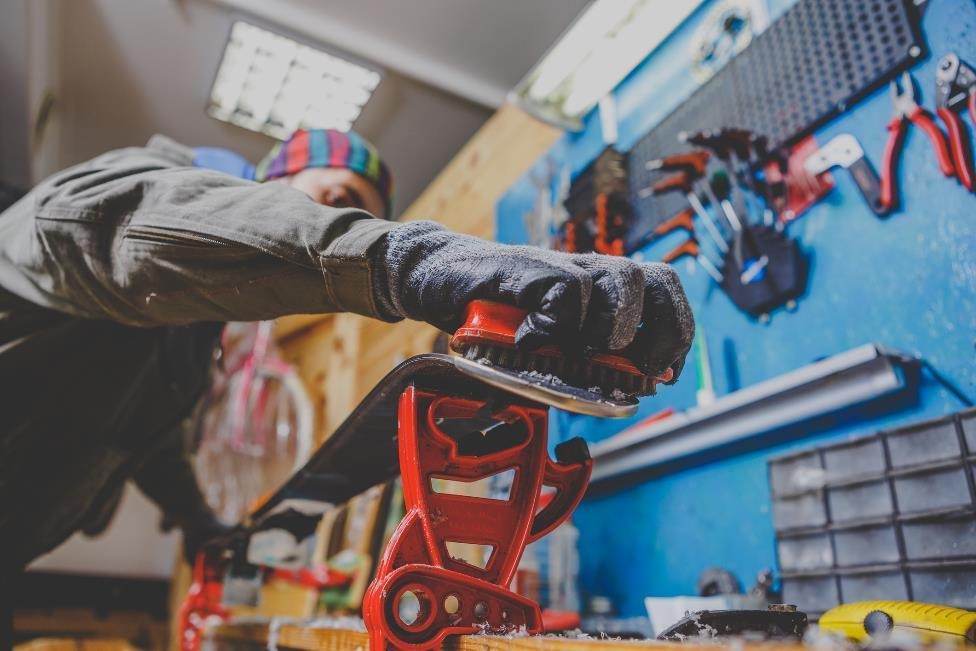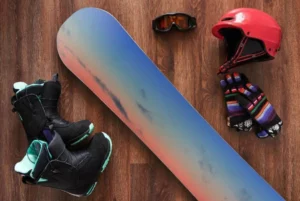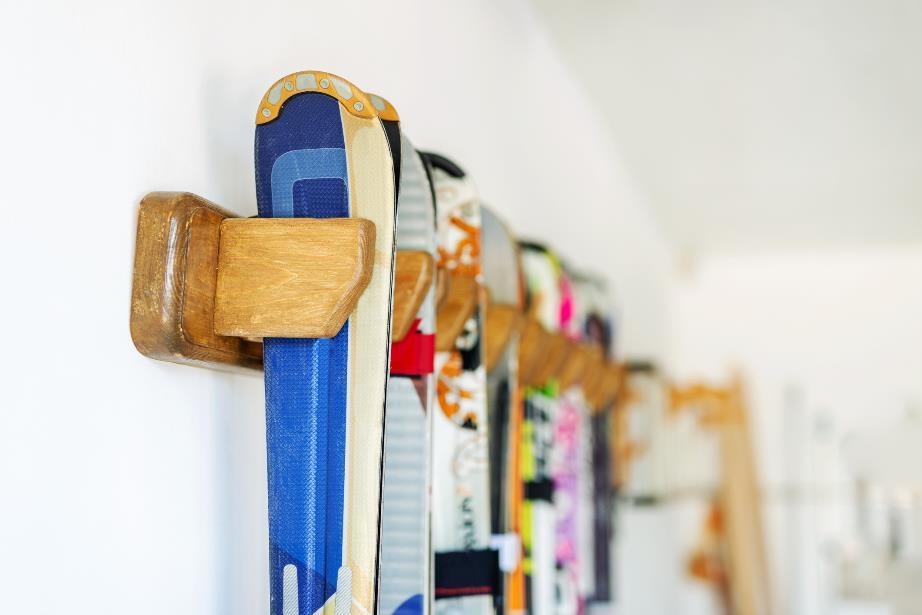No matter how long the ski and snowboard season, there comes a time when the snow melts and you must put away your equipment for the next winter. Make sure you are keeping them in good shape for the mountain.
Now is the time to start thinking about what to do when the ski season wraps up. Are you ready? Here at Saf Keep Storage, our storage experts have put together a guide on all your common questions—such as where to store your skis, how to store ski bindings, how to store your skis and snowboards, and more.
Preparing Your Snowboards and Skis for Storage
If you’ve purchased your own snowboard or pair of skis, you know they’re expensive! The last thing you want to do is store them in a way that will do lasting damage or require additional repair when you’re ready to take them back off the rack. Here’s what you should do before storing them.
Inspect and Clean
Skis and snowboards take a beating during the ski season. It’s not enough to simply melt the snow from your skis or board—you’ll need to go on a deeper clean to make sure irreparable damage doesn’t set in. There are two main things that you’ll need to make sure you do at the very beginning of the process.
- Get rid of dirt and grime—Melting, dirty, salty snow can leave behind a mess. Use warm water and either detergent or a base cleaner to fully clean your board or skis.
- Inspect and repair damage—Check your ski edges for any chips as well as the board itself for any cracks. You’ll want to get that fixed before putting your ski or snowboard into long-term storage.
How to Store Ski Bindings
Properly storing ski bindings is an often overlooked part of storing your skis. Ski bindings connect your boot to your ski, and they do so via a set of tensioned springs. Though they are designed to withstand that tension over long periods of time, it’s a good idea to loosen your bindings during storage.
Snowboarders have it easy here: you can simply remove your bindings from your board. Skiers will have to leave their bindings on the ski, but just be sure to loosen your DIN settings on your toe pieces while moving the heel into the “ski” position. While it may seem trivial, these steps can help extend the life of your bindings (and reduce the possibility of a binding mishap) by reducing the tension in the springs.
Wax Yours Skis

When waxing your ski or snowboard for normal usage during the winter season, you’ll want to apply wax and then scrape most of it off for optimal snow carving. But during the offseason, that second step can actually get in the way of optimal storage. Before you put your skis or snowboard away for the summer, give it a good application of wax and skip the scraping. This will help in the prevention against oxidation.
How and Where to Store Skis
Skis and snowboards are sturdy items that are designed to perform in extreme temperatures. But that doesn’t mean you can just stash them anywhere. Here are some of our tips on how and where to store skis.
Ski Bags
Anyone who’s flown into Denver or Salt Lake City in the winter has assuredly seen abnormally-shaped bags that contain a pair of skis or a snowboard. In addition to providing a convenient way to transport your equipment to the mountain, ski bags make great offseason storage containers no matter where their offseason home may be.
However, be sure to completely clean and dry your ski or snowboard before putting it into a bag for months and months. A moist bag can result in damage or warping to the wood that comprises much of your ski or snowboard.
DIY Ski Rack
If you’re storing your skis or board in your home, a great option is making a DIY ski rack. The aesthetic options are endless, but you have two basic options: a vertical storage rack and a horizontal storage rack. If you’re storing both snowboards and skis, a horizontal rack is probably your best bet, as snowboards lack the convenient ski shape that allows them to be stored vertically.
Other Equipment to Consider
Of course, skis and snowboards aren’t the only pieces of equipment that you need. Don’t forget about your other winter gear:
- Helmet storage—Most helmets come with a drawstring bag that makes for easy storage. Otherwise, you can hang them on your ski rack by their chin straps.
- Boot storage—Store your boots upright just like you would with your other footwear.
- Goggle storage—Goggles can be easily scratched, so be certain not to store them near anything that could poke them. Consider purchasing a hard case for extra protection.
One other pro tip? Store your mountain equipment together if it’s possible. That way, you won’t have to search your home in a panic the night before you’re leaving for your next trip trying to remember where you stored your helmet and goggles.
Don’t Let a Lack of Space Slow You Down

If you don’t have a garage or just can’t make space for your snowboard, skis, boots, and other equipment, there’s no need to worry. You can still become a ski or snowboard owner—simply use the power of self storage!
Here at Saf Keep Storage and our other managed facilities, we provide convenient and secure self storage near you with month-to-month leases. Find a storage facility near you and get the space you need for your skis, snowboards, and other mountain sports equipment today!



